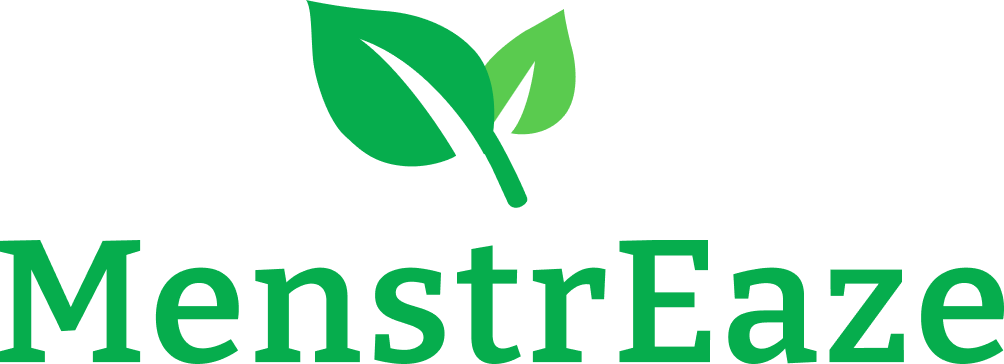
Menstruation, while a normal part of the reproductive cycle, can often come with several challenges. One of the less-discussed yet significant aspects is the relationship between menstruation and iron, a vital nutrient for our overall health. This article aims to shed light on the essential role of iron in menstrual health and provide insights on how to maintain optimal iron levels.
Iron's Essential Role in the Body
Iron, an indispensable mineral, serves several vital functions within the body. Its primary role lies in being a critical component of hemoglobin, a protein in our red blood cells that shoulders the responsibility of oxygen transportation from the lungs to the body's various parts. Beyond this, iron also bolsters the proper functioning of our immune system and plays a part in energy production. Therefore, maintaining appropriate iron levels is fundamental to our overall health and wellbeing.
Menstrual Blood Loss and Its Consequences on Iron Levels
The loss of blood during menstruation inherently leads to a substantial loss of iron. The quantity of blood and consequently, iron, lost varies individually. However, those experiencing heavy menstrual bleeding are more susceptible to a greater loss of iron than what their bodies can replenish. This imbalance, if not addressed, can potentially pave the way to iron deficiency or even iron deficiency anemia.
Women who bleed heavily during menstruation are at risk of iron deficiency and anemia. This can have a negative effect on the well-being of women and can cause serious complications. Bleeding causes iron to be lost from the body. If there is heavy blood loss, iron stores in the body can become low, leading to iron deficiency. If the iron deficiency is severe enough to impair red blood cell production, iron-deficiency anemia can develop.
Prolonged blood loss, such as a menses duration of more than 7 days, or moderate blood loss in combination with an iron-deficient diet, such as often occurs in adolescents and vegans, can also contribute to the risk of depleted iron stores in women.
Currently, most guidelines include routine testing for anemia. Fewer guidelines consider measuring iron levels. Not all the guidelines include advice on the best way to treat iron deficiency and anemia. For those that do, the recommendations vary and sometimes offer conflicting advice. There is little agreement on when to give iron therapy, and whether this should be given by mouth or by infusion.
The Correlation Between Iron Deficiency and Menstrual Cramps
When the body's iron stores are exhausted, it results in iron deficiency. This condition can manifest in a variety of symptoms such as fatigue, weakness, pale skin, shortness of breath, cold hands and feet. But one might wonder, how does this connect to menstrual cramps?
While research in this field is still evolving, some studies propose a potential association between iron deficiency and escalated menstrual pain. The logic behind this suggests that iron deficiency can cause a decrease in the blood's oxygen-carrying capacity. This could potentially lead to uterine muscle fatigue, thereby intensifying menstrual cramps. However, this hypothesis requires further research for confirmation.
Iron's Impact on Hormonal Balance
Iron's role extends into the realm of hormone regulation as well. It is integral to the production of serotonin, a hormone instrumental in mood regulation. It is well understood that iron is a cofactor for several enzymes in the body and has a role in the neurotransmitters production and function (such as dopamine, and Gamma-Butyric Acid (GABA)), hormonal function and DNA duplication. For instance, iron deficiency can cause a dip in serotonin production, possibly leading to mood swings, fatigue, and irritability - symptoms commonly associated with premenstrual syndrome (PMS).
In addition, it's worth considering that the hormones estrogen and progesterone, which orchestrate the menstrual cycle, could potentially be influenced by iron levels. Estrogen and progesterone are hormones that play a role in the menstrual cycle and reproduction. They also affect mood, energy levels, and sleep. Iron has a complex relationship with these hormones. Although the direct correlation between iron and these hormones necessitates more research, it is believed that estrogen greatly contributes to iron homeostasis by regulating hepatic hepcidin expression.
Iron and Exercise
Regular exercise is generally beneficial for menstrual health, helping to reduce menstrual cramps and PMS symptoms. However, people who engage in regular, intense exercise may have increased iron needs. Studies have shown that poor iron status is often associated with low energy availability (LEA). Exercise induces a process called hemolysis, where red blood cells (and therefore, iron) are broken down. This, combined with iron loss through sweat and the potential for gastrointestinal bleeding associated with regular high-impact exercise, can contribute to greater iron losses. Therefore, active individuals should be particularly mindful of their iron intake.
The Risks of Excessive Iron
While adequate iron is essential, it's also crucial to be aware of the potential risks associated with excessive iron. Iron overload, or hemochromatosis, can lead to serious health problems, including liver disease, heart problems, and diabetes. This condition is usually caused by a genetic disorder but can also result from taking too many iron supplements.
Therefore, self-prescribing iron supplements is not advised. Instead, if you suspect you have an iron deficiency or if you're considering taking iron supplements, it's best to consult with a healthcare provider. They can provide appropriate guidance based on your specific needs and circumstances, ensuring your approach to iron supplementation is both safe and effective.
Iron-Rich Foods
Diet is the first line of defense against iron deficiency. Iron-rich foods include:
- Lean Meats: Beef, chicken, and turkey are excellent sources of heme iron, a type of iron that the body absorbs easily.
- Seafood: Oysters, clams, and fish also contain heme iron.
- Leafy Greens: Spinach, kale, and collard greens are packed with non-heme iron, another form of iron that's less readily absorbed but can still contribute to your iron intake.
- Legumes and Grains: Lentils, chickpeas, quinoa, and fortified cereals are great vegetarian sources of non-heme iron.
- Nuts and Seeds: Cashews, pumpkin seeds, and sunflower seeds contain non-heme iron.
To enhance iron absorption from non-heme sources, you can pair these foods with vitamin C-rich foods, like bell peppers, oranges, strawberries, or tomatoes. Please note that red meat, such as beef, and legumes may contribute to menstrual cramps. Therefore, it is important to find a balance in the amount consumed to manage symptoms effectively.
Final Thoughts
In conclusion, iron plays a crucial role in menstrual health, and managing iron levels can be a key part of managing menstrual cramps and overall menstrual well-being. Incorporating a balanced diet rich in iron, being mindful of factors that can affect iron levels, and seeking professional guidance as needed can all contribute to better menstrual health. Remember that each person's needs and experiences with menstruation can vary greatly. Always listen to your body, and don't hesitate to seek professional help if you have concerns about your menstrual health.
References
- Mansour, D., Hofmann, A. & Gemzell-Danielsson, K. A Review of Clinical Guidelines on the Management of Iron Deficiency and Iron-Deficiency Anemia in Women with Heavy Menstrual Bleeding. Adv Ther 38, 201–225 (2021).
- Maharani, Sandy Isna, Noor Pramono, and Sri Wahyuni. "Dark chocolate’s effect on menstrual pain in late adolescents." Belitung Nursing Journal 3.6 (2017): 686-692.
- Habibian N, Alipour A, Rezaianzadeh A. Association between Iron Deficiency Anemia and Febrile Convulsion in 3- to 60-Month-Old Children: A Systematic Review and Meta-Analysis. Iran J Med Sci. 2014 Nov;39(6):496-505.
- Hou, Yanli, et al. "Estrogen regulates iron homeostasis through governing hepatic hepcidin expression via an estrogen response element." Gene 511.2 (2012): 398-403.
- McKay AKA, Pyne DB, Burke LM, Peeling P. Iron Metabolism: Interactions with Energy and Carbohydrate Availability. Nutrients. 2020 Nov 30;12(12):3692.


